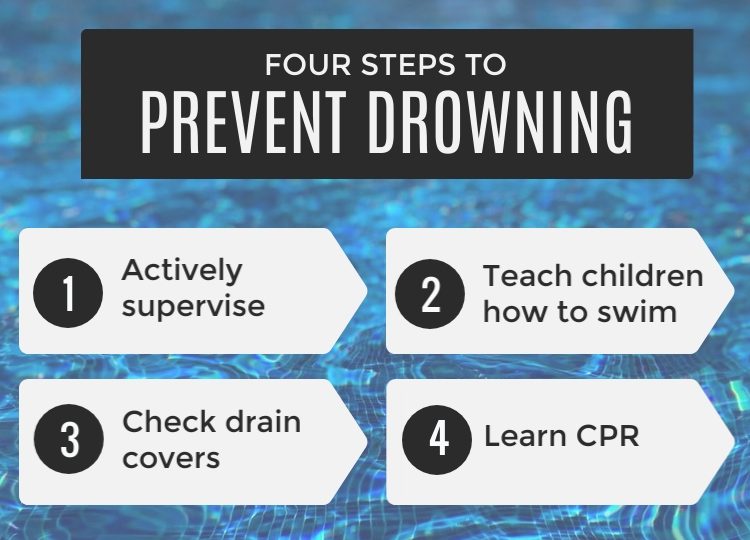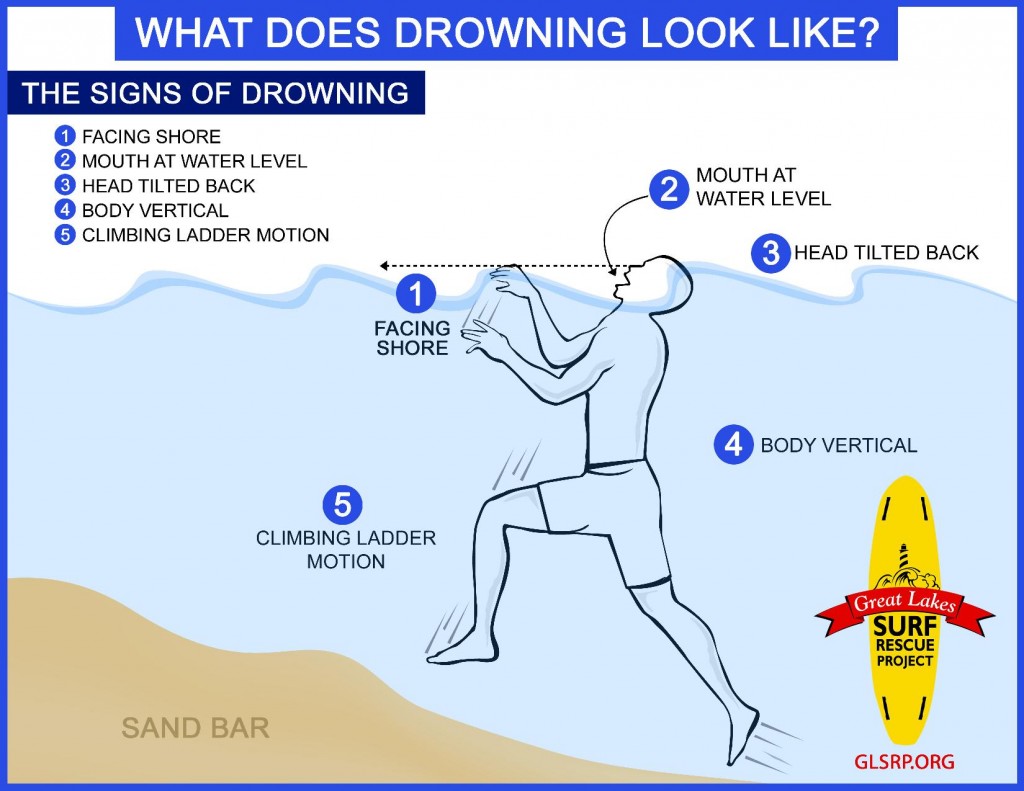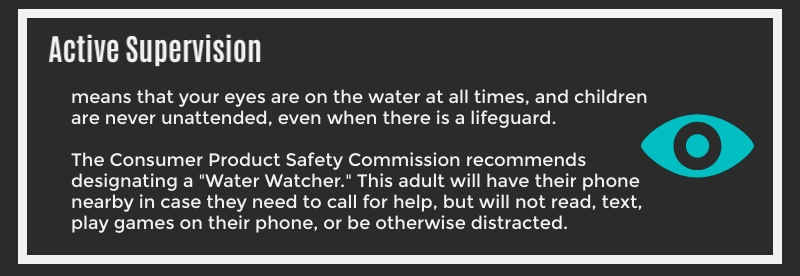What does drowning look like?
While movies and television often portray drowning with the victim thrashing their arms and yelling for help, this is not typically what drowning looks like. It is usually silent, with very little splashing. The Instinctive Drowning Response occurs when a person’s body reacts to the threat of suffocation in the water. It involves the following:
- Usually, drowning people are physically unable to call out for help, since their body is focused on breathing.
- Drowning people’s mouths typically bob above and below the surface of the water.
- Individuals who are drowning are not usually able to wave for help. The Instinctive Drowning Response forces them to use their arms to push down on the surface of the water, in an attempt to keep their head above water.
- Because their arms are used in the Instinctive Drowning Response, they also cannot grab onto a rescuer or rescue equipment.
- During the Instinctive Drowning Response, the drowning person’s body remains upright in a vertical position, and they do not kick their legs.
- People can only struggle this way for 20 to 60 seconds before they go under water for good.
Other Signs of Drowning:
Other signs of drowning or a person in distress are:
- Head low in the water, mouth at water level
- Head tilted back with mouth open
- Eyes glassy and empty, unable to focus
- Eyes closed
- Hair over forehead or eyes
- Not using legs to kick
- Vertical body position
- Hyperventilating or gasping
- Trying to swim in a particular direction but not making headway
- Trying to roll over on the back
- They appear to be trying to climb a ladder
Drowning Incident: What to do
If you notice any of these signs in a swimmer, refer to the Red Cross’s drowning chain of survival to get the person to safety:
- Recognize the signs of someone in trouble and shout for help.
- Rescue and remove the person from the water, if it is possible to do so without putting yourself in danger.
- Point to one person and tell them to call 911. If alone, do two minutes of rescue breathing and CPR and then call 911.
- Begin rescue breathing, then CPR.
- Use an AED if available and transfer care to EMS.
Even if removing the person from the water is all that is needed for the victim to regain consciousness, the rescuer should call 911 and the victim should be transported to a hospital for further evaluation.
For more information on the importance of learning CPR to water safety, visit our Lifesaving Skills page.

RESOURCES
- Drowning is a leading cause of death for children.
- While children are at highest risk, anyone can drown.
- Nonfatal drowning can result in long-term health problems and costly hospital stays.
Learn more by visiting the CDC Drowning Facts webpage.
- Drowning is a major public health issue that can be prevented.
- You can prevent drowning.
Learn more by visiting the CDC Drowning Prevention webpage.
Most drownings involving young children occur in residential settings. Children under the age of five years do not struggle in the water. They can drown without making a sound.
Learn more by visiting the VDH Home and Recreational Safety Drowning Prevention webpage.
Drowning is one of the leading causes of unintentional death for children ages one through four.
Learn more by visiting the VDH Drowning in Virginia webpage.






